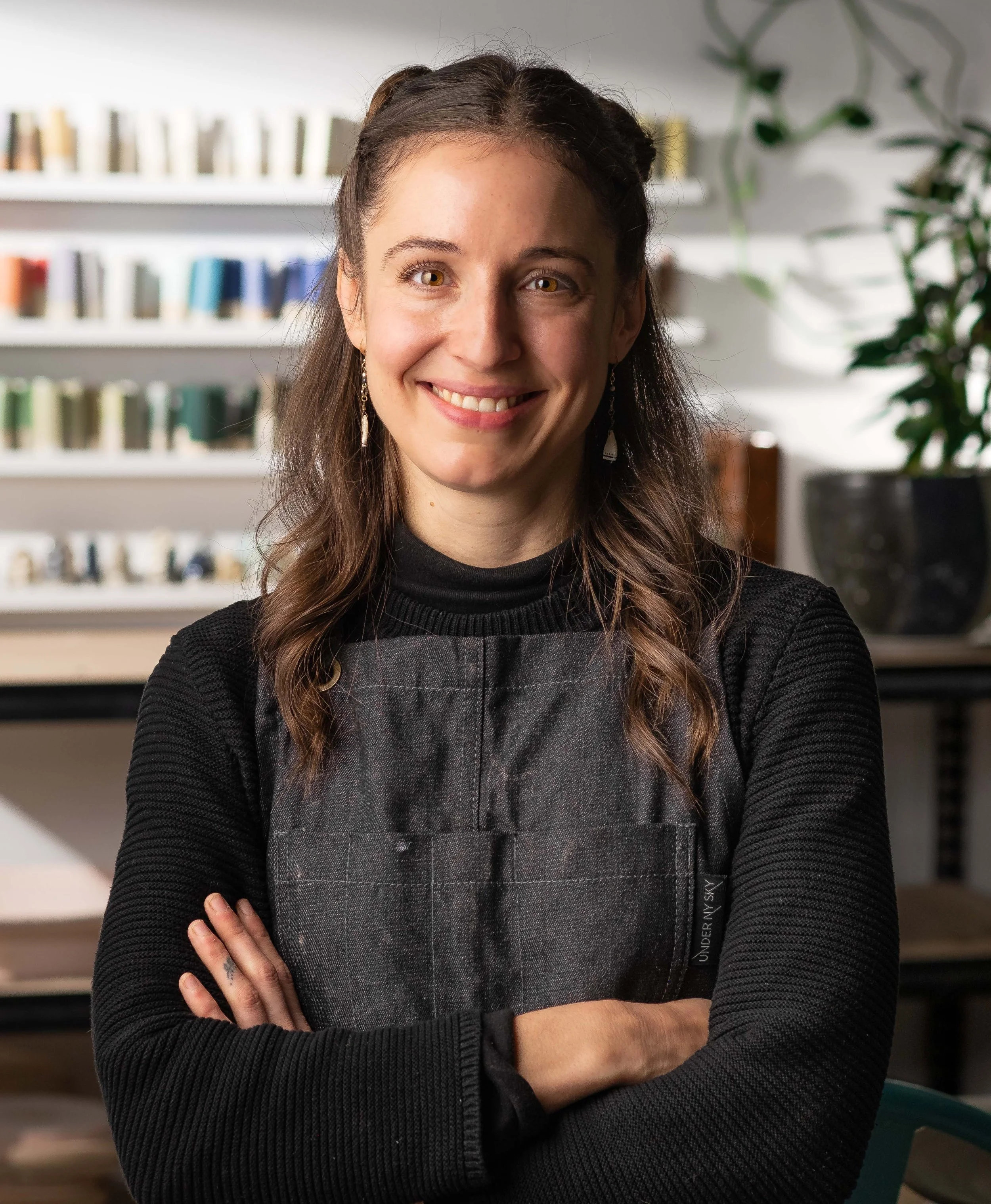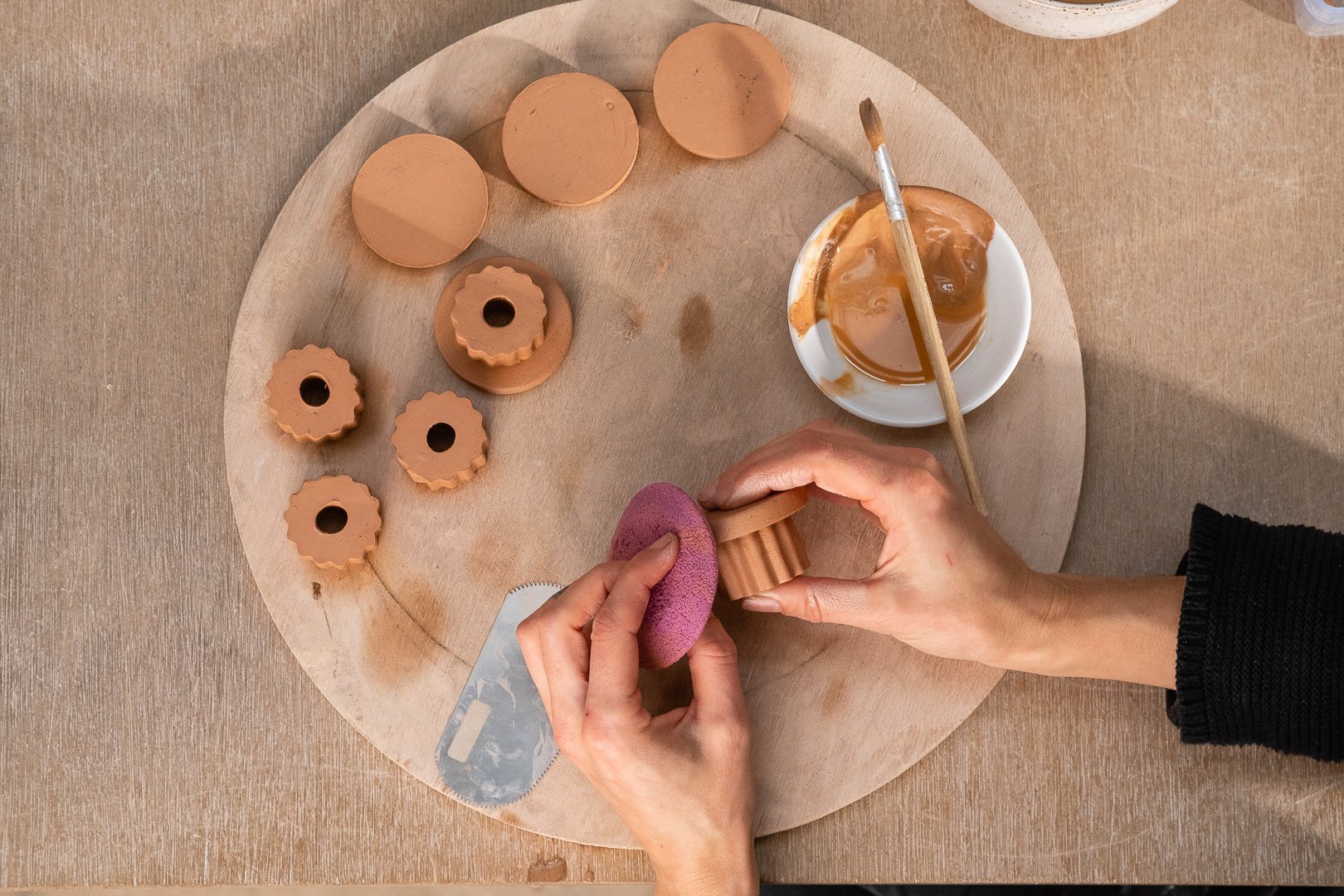Meet the Maker... Phoebe Kretschmer
Ceramicist and designer Phoebe Kretschmer’s practice explores the malleability and individuality of clay to create innovative ceramic products. Designing the Wavy Handles Range for jam, we sit down with Phoebe to discuss her creative processes and her take on Australian design.
Photos by Connor Patterson
Can you tell us a bit about your background?
My background encompasses an array of experiences that have all shaped my creative process. This began during my studies in Interior Architecture at UniSA, where my love and appreciation of objects and furniture first grew. Designers like Eileen Grey inspired me, and through studying design subjects I began to consider furniture and objects I would like to create.
After graduating in 2011, I worked in retail store design, before moving to Vancouver, Canada in 2014 after feeling life needed change. The following year, I began to learn pottery as I had found myself drawn to the medium. I began learning at a Japanese Studio called ‘HiDe Ceramic Works’. I learnt under the owner and teacher, Hidenori Ebina, and in 2015 began employment with the studio as a teacher, as well as assisting with commissions and studio operations. I worked at the studio until I felt a pull back to Australia and made the decision to return at the end of 2018.
Once back in Australia, I set up a studio in the home shed while also commencing employment with a startup company, All The Things. I learnt many different skill sets in this role, primarily production management and assistance with product photoshoots and filming. During this time, I continued to create pottery at home.
In late 2021 I was fortunate enough to start as Production Manager in the Ceramics Studio at JamFactory, which has been a nice amalgamation of my passions and experience so far. I’m grateful for the experiences that have led me to this point.
You designed the Wavy Handles Range for the jam collection. Can you tell us a bit about your research and development process, how you found inspiration for the range and how you overcome the challenges involved in designing new pieces?
These pieces were inspired by the idea of creating a design element that could enhance anyone's furniture and cabinetry, which could be utilised by both the design sector and those wanting to personalise their own pieces/spaces. The Wavy Range was made in consideration of the material and glaze. I’ve always been intrigued by repetitive patterns. The rippled surface was possible due to the plasticity of clay, creating ridges for different glazes to pool and break in lines and adding a textural quality. Being a handle, touch was an essential element in the design and how the texture and shape of the clay and glaze would feel to the user.
The R&D process involved much testing, prototyping various ideas, playing with scale, seeing how different glazes would respond and coming up with a selection that allowed glossy, matte and satin options as well as neutral and colourful tones. There was a bit of trial and error with the extrusion dies, and a few iterations were made to get things right.
Designing and making is a process of never-ending continual improvement. There’s always challenges, but collaborating with others, analysing and problem-solving, and focusing on solutions, have been useful in overcoming the challenges. Also, working in ceramics, you are subject to changing raw materials and clay formulations, so there is perpetual testing that comes with the material to maintain consistent results.
The notion of an Australian design aesthetic is varied and multifaceted. What does Australian design mean to you?
Australian design doesn’t mean any one thing to me. I see a freedom and boldness in design here. There is inspiration from our landscape, the vibrant colour scheme of nature and sky, the distinct flora and fauna, and the climate. Also, living in a diverse country, there is a tapestry of varying design expressions drawn upon. All of this intermingled with each individuals approach, feed into a feeling of uniqueness and play which builds into a distinct aesthetic.
What inspired you to pursue ceramics?
The malleable nature of the clay first drew me into wanting to work with it. It enabled creative freedom, transitioned quickly beneath touch, and fed into a desire to make objects. I also appreciated its history and connection to a making that has been done by so many people and cultures for millennia. After starting to learn and experience the making process with clay first-hand, as well as becoming more inspired by different artists like the iconic Lucie Rie, I could not imagine a life that didn’t in some way include ceramics.
How do you think your practice has evolved overtime? Has being at JamFactory had any influence on your work/practice?
My own practice is continually evolving. Experimenting in the making and then evaluating how I feel, what works, what I like, and what I don’t, informs the direction of my focus. As I meet new people, discover inspiring contemporary artists, find beauty and patterns in nature, get unexpected results and learn more: this all feeds into this evolution.
Being at JamFactory and surrounded by all the creative people that make up our community has been inspiring and influenced me in providing more exposure to different making processes and imaginations. I have also learnt a great deal more about pottery and product design in my time here, which has had a flow-on effect on my own techniques and operation.






